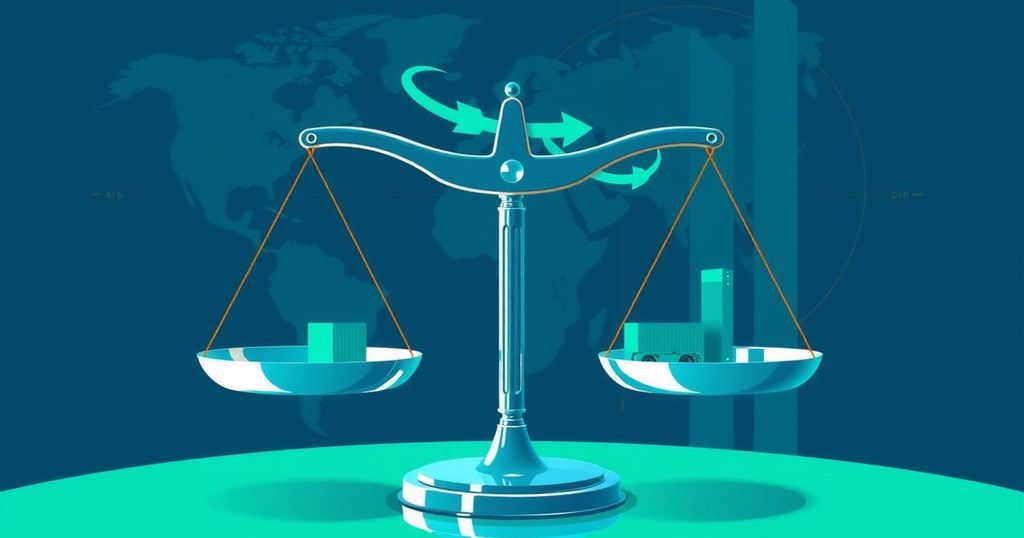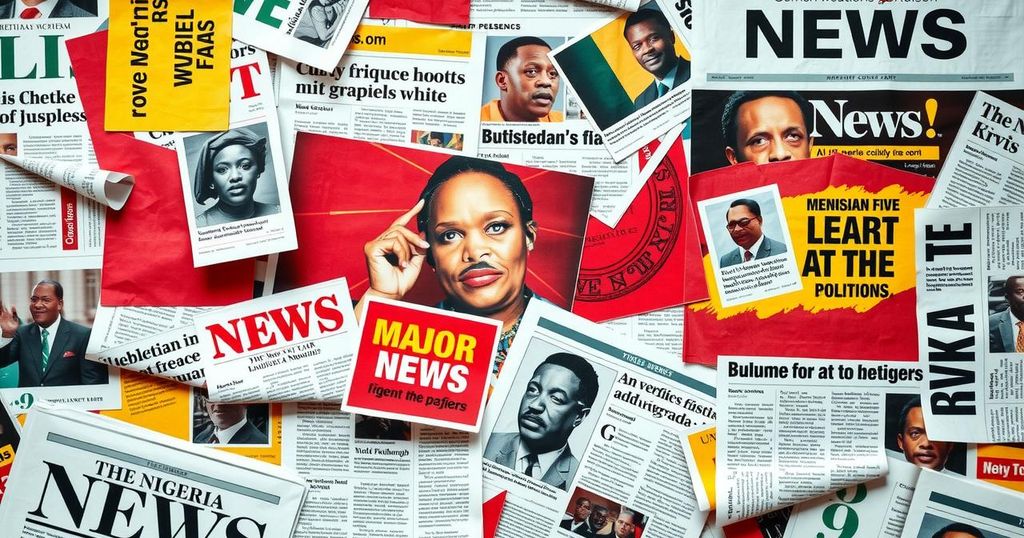economics
Politics
AIR FORCE ONE, ASIA, DONALD TRUMP, ECONOMICS, EUROPE, EUROPE/ASIA, FOX BUSINESS, INDIA, INFLATION, KEVIN HASSETT, NATIONAL SECURITY, NORTH AMERICA, POLITICS, PUTIN, REUTERS, RUSSIA, SKY NEWS, TRUMP, U. S, UK, UKRAINE, UNITED STATES, US, US PRESIDENTIAL ELECTION, WHITE HOUSE, YVETTE COOPER
Isaac Bennett
0 Comments
Impending Reciprocal Tariffs: U.S. Strategy and India’s Response
U.S. President Donald Trump’s reciprocal tariff strategy, beginning April 2, targets all countries. This plan aims to enhance U.S. trade and protect against unfair competition. However, uncertainty surrounds the tariff calculations and affected countries, leading to market instability concerns. Concurrently, India and the U.S. are engaged in negotiations for a bilateral trade agreement to boost cooperation and trade volume significantly by 2030.
In light of the approaching April 2 deadline for reciprocal tariffs, U.S. President Donald Trump has confirmed plans to enact these tariffs across all countries rather than a select few. In his remarks aboard Air Force One, he emphasized that this strategy aims to enhance the U.S. economy and garnered significant financial returns. White House economic adviser Kevin Hassett indicated that while tariffs may focus on countries with notable trade imbalances, specific targets have yet to be revealed.
The administration’s lack of clear guidelines regarding the forthcoming tariffs has raised questions about their calculation and implementation. Trump has expressed intentions to consider both tariff and non-tariff barriers in these tariffs, although details on the assessment process remain vague. This uncertainty has sparked concerns about potential negative impacts on the global economy, with experts noting the risks of increased trade barriers, as highlighted by UK Secretary of State Yvette Cooper.
Trump has positioned these tariffs as mechanisms for shielding the U.S. from unfair competition and aims to use reciprocal tariffs as leverage in achieving favorable trade agreements. Conversely, this potential trade war has raised alarms in financial markets due to fears of an economic downturn. Trump has directed U.S. trade officials to develop tailored countermeasures against targeted nations that impose tariffs on American exports.
Amidst these developments, India and the U.S. have initiated talks towards a bilateral trade agreement (BTA), which aims to bolster cooperation in significant areas like market access and supply chain integration. These discussions followed recent negotiations and aim to finalize an agreement by late 2025, aspiring to elevate bilateral trade to USD 500 billion by 2030.
The U.S. is seeking concessions across various sectors—including automobiles and agricultural products—while India is expected to advocate for reduced tariffs on labor-intensive goods such as textiles. Indian exporters are requesting governmental protection from U.S. tariffs, highlighting the significant impact these could have on their industries. Experts speculate that India may resist including agriculture in the trade discussions due to its political sensitivity, despite the U.S. pushing for deeper access to this sector.
In terms of current trade relations, the U.S. remains India’s largest trading partner, recording significant exports from both countries. Key U.S. exports include almonds and ethanol, while notable Indian exports comprise drug formulations and textiles. Overall, U.S.-India trade totaled approximately USD 119.71 billion in the 2023-24 period, significantly benefiting both economies, with India recording a substantial trade surplus.
As the April 2 deadline for the introduction of reciprocal tariffs approaches, tensions persist regarding the implications for U.S.-India trade relations. While President Trump seeks to implement a broad tariff strategy to enhance domestic economic growth and negotiate better trade terms, India’s proactive engagement in bilateral talks demonstrates a commitment to mitigating potential adverse effects. Ensuring cooperation in trade discussions will be crucial for both nations as they navigate these complexities to promote mutual economic benefits.
Original Source: www.livemint.com




Post Comment